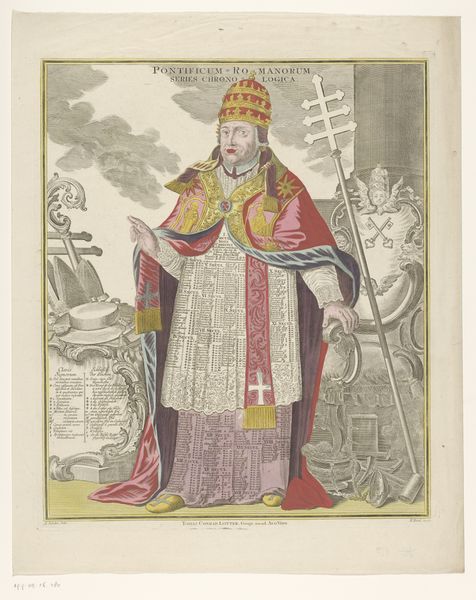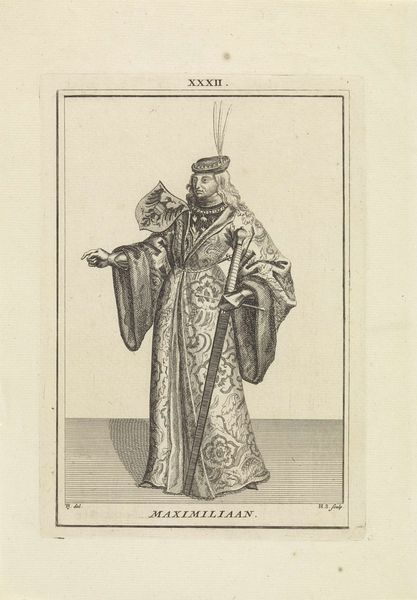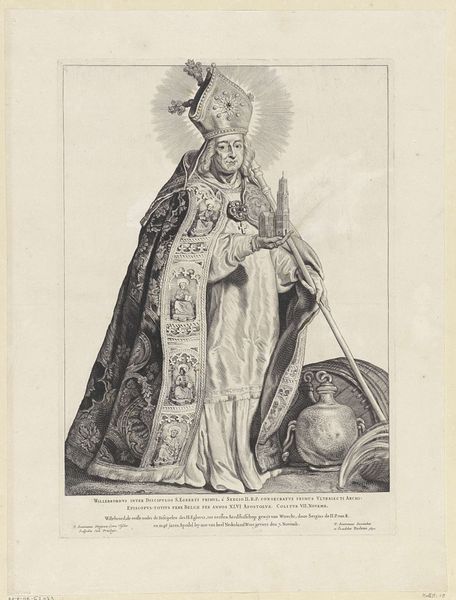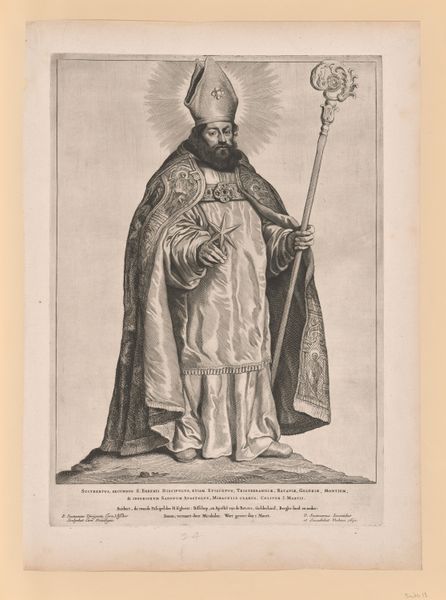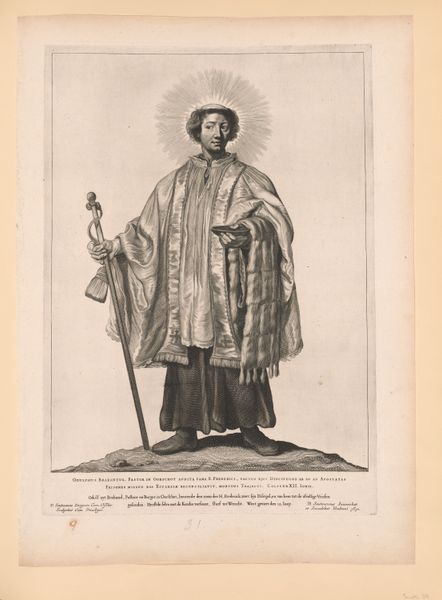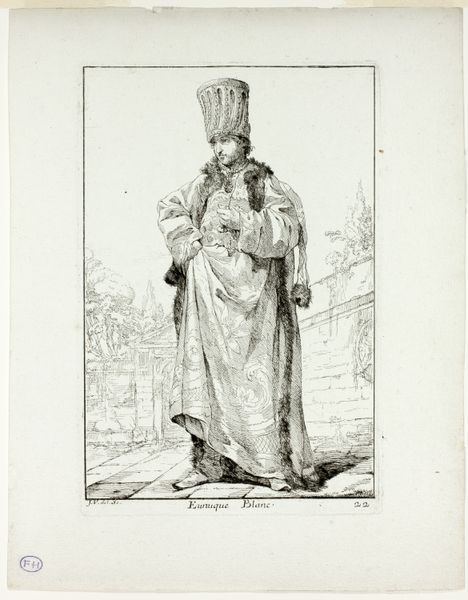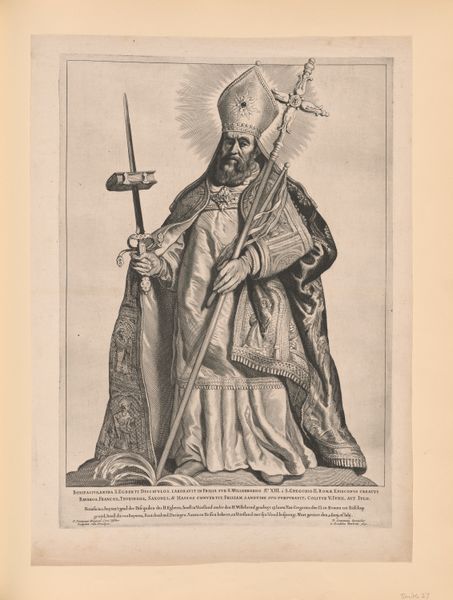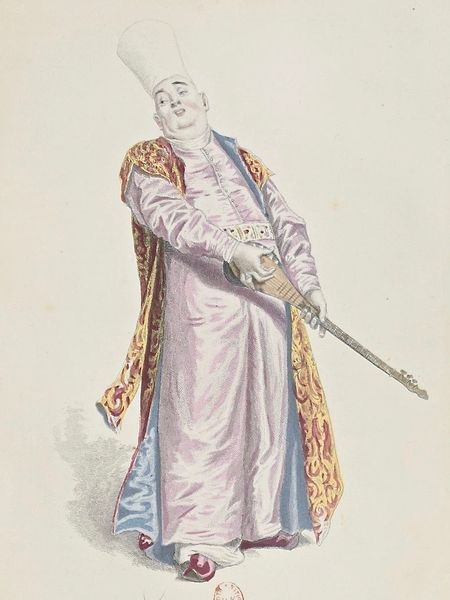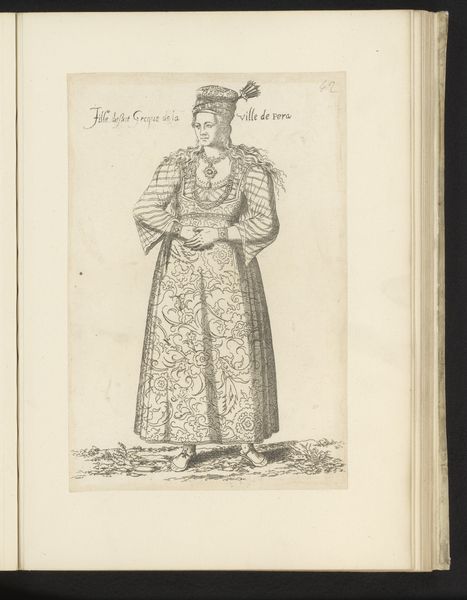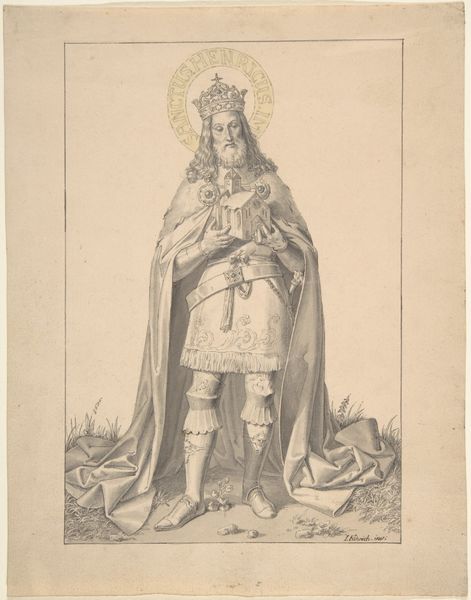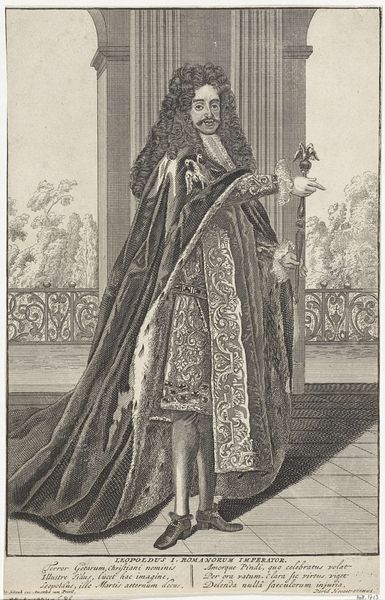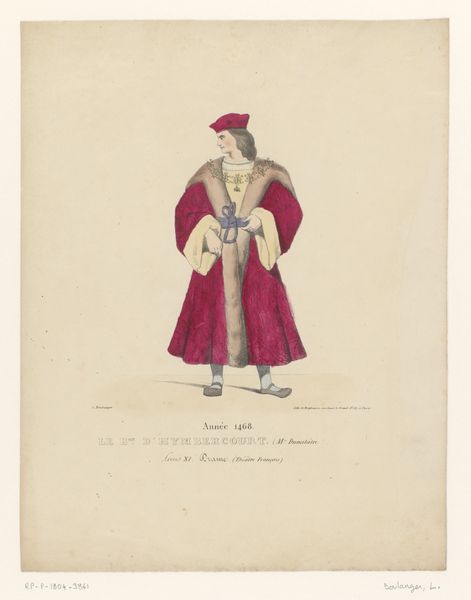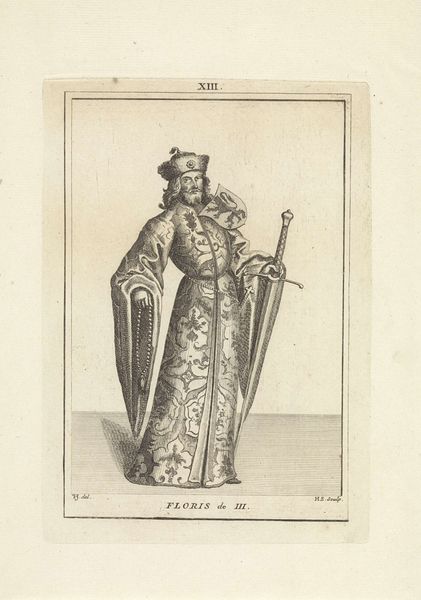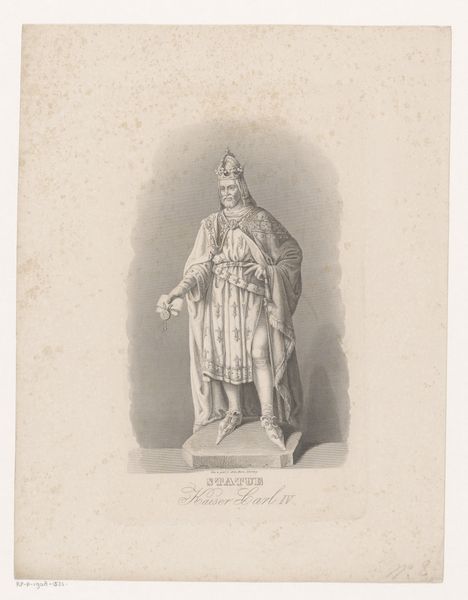
print, engraving
#
portrait
#
neoclacissism
# print
#
historical fashion
#
history-painting
#
academic-art
#
engraving
Dimensions: height 274 mm, width 165 mm
Copyright: Rijks Museum: Open Domain
Curator: Looking at this print, “Portret van Keizer Sigismund met scepter en wereldbol” by Pierre Duflos, made sometime between 1752 and 1816, I’m immediately struck by how it positions Sigismund within the visual language of power and authority prevalent at the time. Editor: Wow, heavy is the head that wears the crown, eh? I mean, look at the regalia! All that gold; it's practically blinding. Makes you wonder how much personal freedom a guy like that actually had. All those expectations and duties must weigh you down! Curator: Absolutely. We have to consider the context: neoclassicism's revival of classical ideals, combined with the visual conventions of academic art. Duflos is not just portraying a man, but constructing an image of imperial legitimacy. His attire is also quite particular as it resembles ceremonial orthodox vestments. Editor: But that rigidity, I dunno, it seems like a gilded cage. All the fabrics look itchy. He carries this golden ball, right, I guess he doesn’t think of it as a toy. The engraver used these light colors for the vestements as well as pale skin for his beard. The overall composition seems slightly unnerving. Curator: I agree, and that's where a critical reading comes into play. Who is this portrait for? What power dynamics are at work? Consider how the style of representation contributes to or subverts our understanding of historical power structures. This wasn't meant as a rebellious statement, mind you. It adheres to established codes, but those codes themselves warrant investigation. Editor: Maybe the artist was trying to subtly comment on the burden of power by showing its…strangeness? I guess these historical figures must have lived in a perpetual theatrical play to maintain some idea of legitimate power. It feels staged but real. Curator: It invites us to delve deeper into the intersection of art, history, and political identity during this period, especially considering the shifts happening in Europe. It gives insight into the mindset of empire at this specific period. Editor: It makes me consider what it would mean to melt all that bling. Distribute the value... maybe create some public parks instead.
Comments
No comments
Be the first to comment and join the conversation on the ultimate creative platform.
